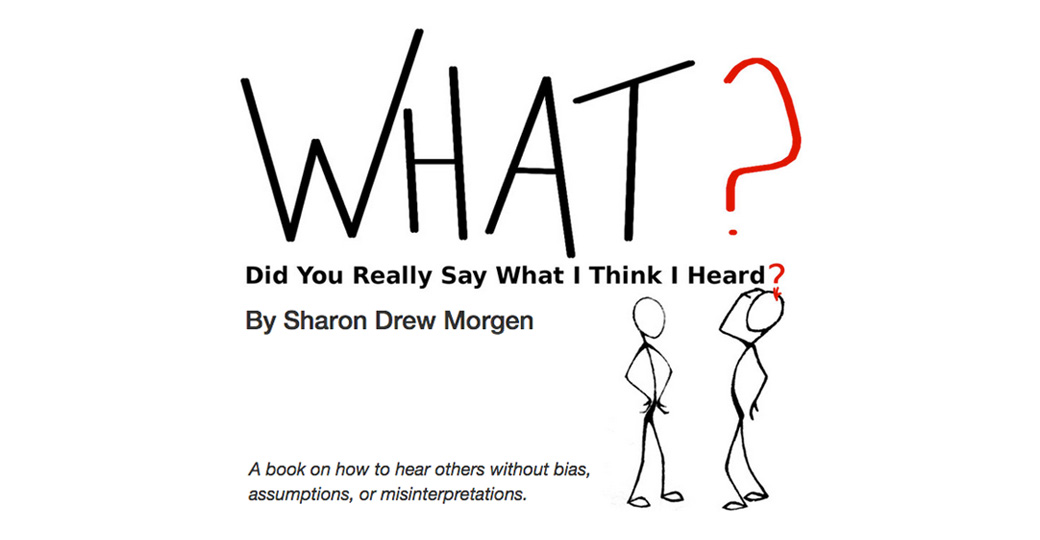Using Buyer Personas During Pre-Sales Stages
Buyer Personas do a great job targeting marketing and sales campaigns to reach the most probable buying audience. But it’s possible to make them even more efficient.
Here’s a question: Do you want to sell/market? Or have someone buy? The belief is that if you can sell/market appropriately – the right campaign to the right buyer with the right solution at the right time – buyers will buy. If that were true, you’d be closing a helluva lot more than you’re closing. Sure, Buyer Personas make a difference in your close rate. But it could be higher.
Currently, your targeted campaigns blanket probable audiences and find buyers at the exact moment they are considering buying, merely closing the low hanging fruit. It’s possible to enter earlier and facilitate (and influence) the complete buying journey.
STAGES IN THE BUYING DECISION PATH
Sales and marketing address activities surrounding solution placement: solution pitch details, solution features, etc., vendor details, gathering needs. But neither facilitate the entire decision path which constitutes issues beyond choosing a solution. Some might call these ‘Pre-Sales’ events. I call it the Buying Decision Path, along which sales is merely one of the entry points needed to close a sale.
Briefly, here are the stages buyers go through prior to purchasing a solution ((Dirty Little Secrets: why buyers can’t buy and sellers can’t sell and what you can do about it fully details each stage www.dirtylittlesecretsbook.com
1. Idea stage.
2. Brainstorming stage. Idea discussed with colleagues.
3. Initial discussion stage. Colleagues discuss the problem, posit who to include on Buying Decision Team, consider possible fixes and fallout. Action groups formed. Research begins. New Team members invited.
4. Contemplation stage. Group discusses
* how to fix the problem with known resources,
*whether to create a workaround using internal fixes or seek an external solution, and acceptable type/amount of fallout from each,
*people who would need to buy-in.
5. Organization stage.
6. Change management stage. Group determines
*if more research is necessary (and who will do it),
*if all appropriate people are involved (and who to invite),
*a review of all elements of the problem and solution,
*the level of disruption and change management as per type of solution chosen,
*the pros/cons/possibilities of external solution vs current vendor vs workaround.
7. Coordination stage. Review needs, ideas, issues of any new members invited aboard and how they affect choices and goals; incorporate change considerations for each solution; delineate everyone’s thoughts re goals and change capacity; appropriate research responsibilities.
8. Research stage. Specific research for each possible solution; seek answers to how fallout or change would be managed with each solution.
9. Consensus stage. Buying Decision Team members meet to share research and determine the type of solution, fallout, possibilities, problems, considerations in re management, policies, job descriptions, HR issues, etc. General decisions made. Buy-in and consensus necessary.
10. Action stage. Responsibilities apportioned to manage specifics of Stage 9. Owners of tasks do thorough research and make calls to several vendors for interviews and data gathering.
11. Second brainstorming stage. Discussion on results of data gathering including fallout/ benefits of each. Favored vendors pitched by Team members.
12. Choice stage. New solution agreed on. Change management issues delineated and leadership initiatives prepared to avoid disruption. Vendor contacted.
13. Implementation stage.
Buyers have to manage these stages (most of which are not solution- or problem-specific) with you or without you. Without being directly involved with behind-the-scenes politics or processes you’re left waiting, pushing product data, and hoping to be there when they’re ready. And knowing the details of your Buyer Persona is insufficient.
Do you want to sell/market? Or have someone buy? Right now your efforts to sell and market are bringing in no more than 5% close rate (net). To become the vendor who truly helps buyers buy, to get an early leg-up on the competition and become part of the Buying Decision Team during the Pre-Sales process, sales (entering at stage 1) and marketing (entering at stage 3) can add another layer of skills, tools, goals, and touch points.
Buying Facilitation® is a Pre-sales Management model that I’ve developed and taught for 30 years with profoundly different results from using sales and marketing alone. It uses neither sales nor marketing thinking: it employs a new form of question, a different type of listening, and a systems-thinking role consistent with true consulting to facilitate the issues that bias the buying decision. And then you can sell earlier and faster, to the right people, on the solution placement end.
I can teach your sales team how to become facilitators, or show your marketing team ways to design the right questions to help buyers traverse each stage of their unique buying journey. See more articles on www.sharondrewmorgen.com. Or call me: Sharon Drew 512 457 0246.
Learn how to hear buyers effectively with Sharon Drew’s new book What?
Sharon Drew Morgen March 2nd, 2015

